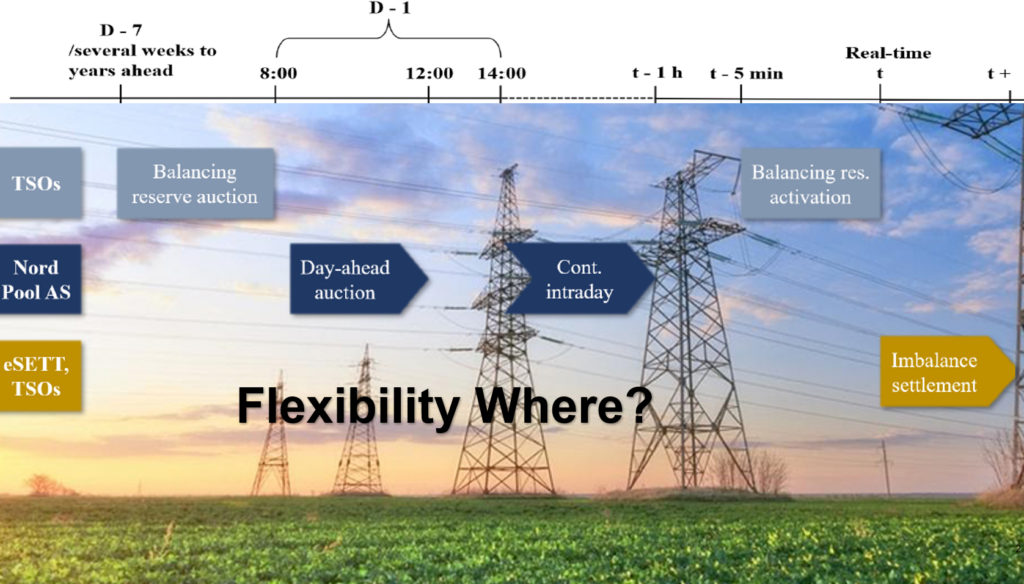The scope of the PowerDig project is at the centre of the thematic area ‘energy systems and markets’ in the NFR EnergiX work program. The aim is to analyze emerging market designs where digitalization of short-run resource allocation in power markets is addressed in terms of:
Flexibility
By focus on flexibility products in addition to energy-only products, recognizing that both geographical and temporal relevance of the products depends on the system state. Hence, the market design should also allow to dynamically respond to the system state when it comes to this temporal and geographical resolution.

The market design should incentivise asset owners to make flexibility available.
Where to allocate or define new market places for flexibility?
Digital platforms
to provide the dynamic functionality to handle different temporal and geographical resolutions, but also focusing on cyber security for the participating actors and at the system level. Understand how such platforms and market design change the roles of the different actors and suggest decision-support tools to support those roles.

Optimal resource allocation
Recognizing that optimal resource allocation in the short-run maximizes social welfare including the value of security of supply. The suggested market design needs to address that.

Assess the optimal resource allocation in the long-term, both in terms of trade-offs between distribution and transmission capacity and the capability to incorporate a high share of renewables.
Emerging Actors and TSO-DSO interfaces
Understanding the role of a flexible demand side as consumers could be active participants in the short-term markets.
Also defining flexibility products that can be traded cross-border or between the Distribution System Operators (DSO) and Transmission System Operators (TSO) when capacity in the power system allows.

Project objectives
The aim of the PowerDig project is to explore and define new market design ensuring optimal short-run allocation of energy resources based on digitalization capabilities. PowerDig researches market designs that are dynamic in temporal and spatial resolution in order to handle a higher share of renewables and address shortcomings in existing markets related to both the allocation and pricing of flexibility, scarcity resources and services related to the security of supply. A central part of the project is to understand and adequately address the relationship between these and energy-only markets as planning horizons become shorter. To this end, PowerDig has three Primary objectives and sub-objectives:
